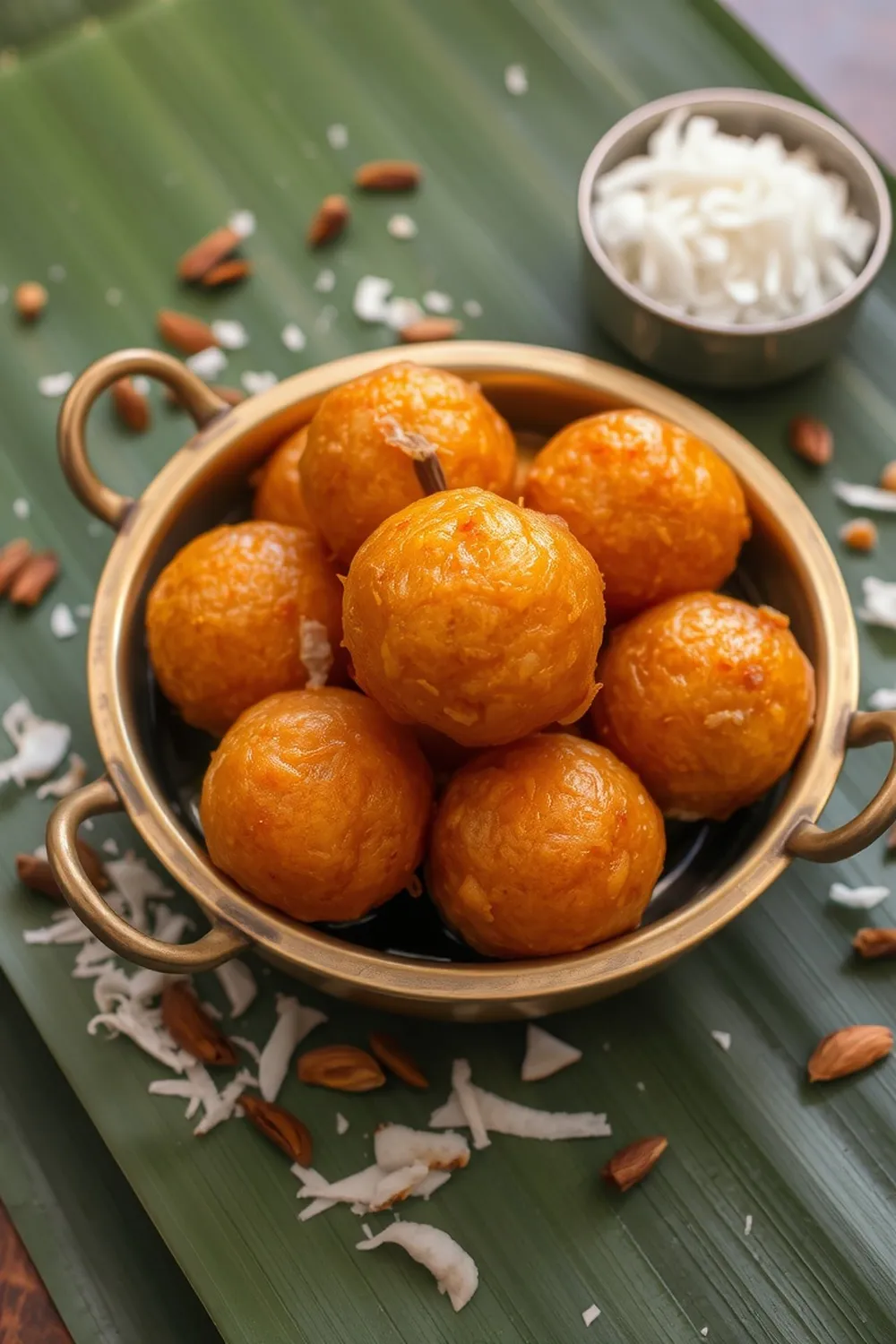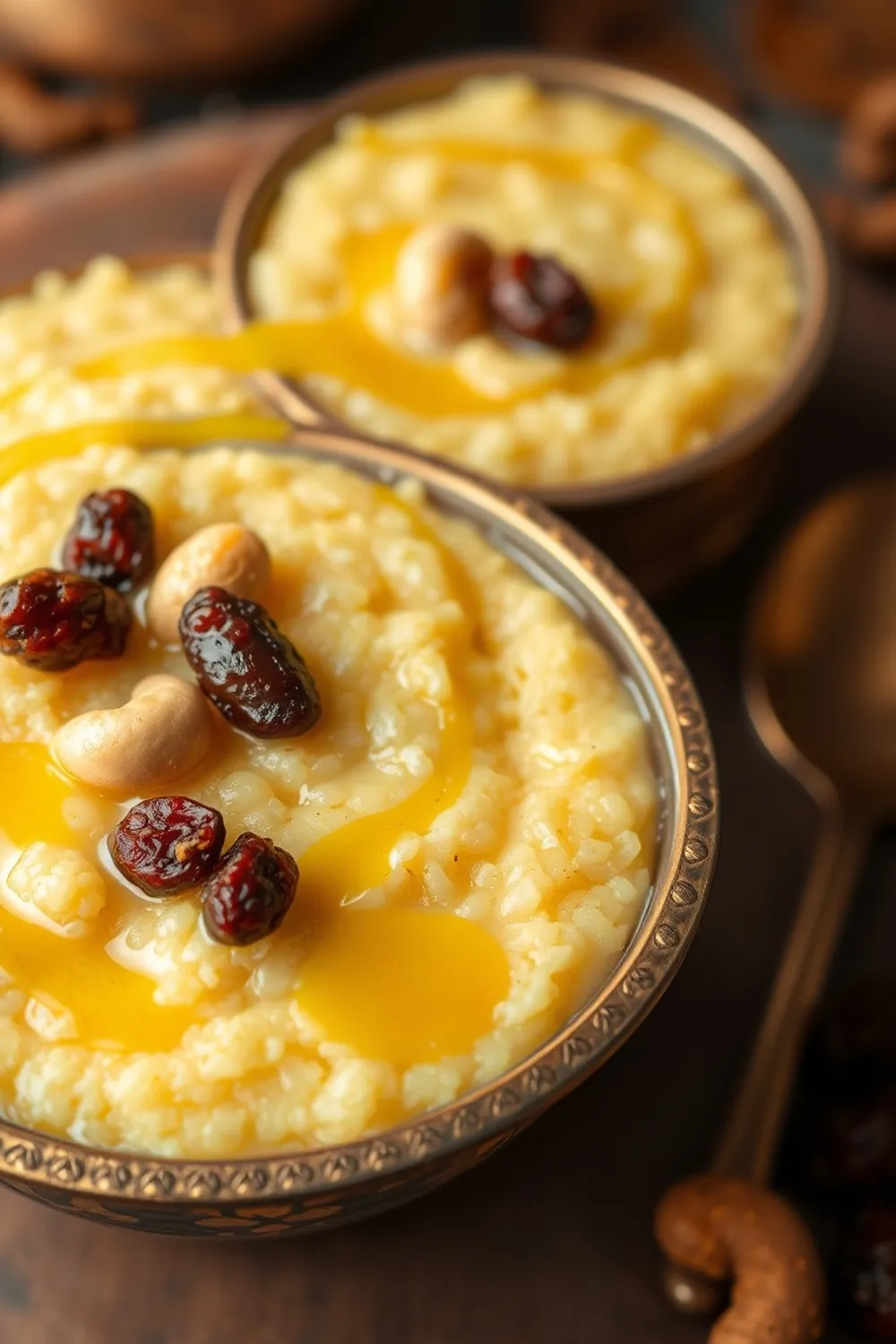- Clean and dry the pressure cooker thoroughly to prevent curdling.
- Combine the roasted vermicelli, sugar, milk, water, cardamom powder, and an optional pinch of salt in the cooker. Mix well.
- Place the cooker on medium flame. Optionally, add a spoon or plate at the base to prevent splashing.
- Cook on high heat until steam forms, then reduce the flame to low. Pressure cook for 2 whistles (8-10 minutes).
- Let the pressure release naturally. Open the lid and stir the mixture.
- Heat ghee in a pan. Fry the cashews until golden brown, then add the raisins until they plump up. Mix into the payasam.
- Serve warm or chilled. Adjust the consistency with milk and sweetness as needed.
- Calories:280 kcal25%
- Energy:1171 kJ22%
- Protein:6 g28%
- Carbohydrates:45 mg40%
- Sugar:30 mg8%
- Salt:80 g25%
- Fat:9 g20%
Last Updated on 3 months by Neha Deshmukh
Easy Vermicelli Payasam Recipe – Milk & Cardamom Delight
Hey everyone! If you’re looking for a dessert that’s comforting, fragrant, and surprisingly easy to make, you’ve come to the right place. This vermicelli payasam (or kheer, as it’s known in some parts of India!) is a family favorite, and I’m so excited to share my version with you. I first made this for Diwali a few years ago, and it’s been a tradition ever since. It’s the perfect sweet treat to end a meal, or honestly, just enjoy on a cozy afternoon!
Why You’ll Love This Recipe
This payasam is special because it’s quick, uses simple ingredients, and delivers big on flavor. The roasted vermicelli gives it a lovely texture, while the cardamom and milk create a wonderfully aromatic and creamy dessert. Plus, using the pressure cooker makes it almost foolproof – no more worrying about constant stirring! It’s a classic Indian dessert made easy.
Ingredients
Here’s what you’ll need to whip up this delicious payasam:
- ½ cup roasted vermicelli (approximately 75g)
- ½ cup sugar (approximately 100g)
- 2 cups raw unboiled milk (approximately 480ml)
- ½ cup water (approximately 120ml)
- ½ tsp cardamom powder (approximately 2.5g)
- 1 tbsp ghee (approximately 15ml)
- A few cashew nuts (around 8-10)
- A few dry grapes (raisins) (around 10-12)
Ingredient Notes
Let’s talk ingredients! A few things make this recipe shine:
- Roasted Vermicelli: Using pre-roasted vermicelli is a game-changer. It adds a nutty flavor and prevents the payasam from becoming mushy. If you can’t find roasted vermicelli, you can dry roast plain vermicelli in a pan until lightly golden.
- Raw Unboiled Milk: This is key for that authentic, creamy texture. Raw milk (unpasteurized, unboiled) lends a richness you won’t get with pre-boiled milk. However, if you’re concerned about using raw milk, you can use full-fat milk, but the texture will be slightly different. In South India, they often use a combination of milk and coconut milk for an extra layer of flavor!
- Cardamom Powder: Freshly ground cardamom is always best. It adds such a beautiful fragrance. Don’t skimp on this – it really elevates the payasam.
Step-By-Step Instructions
Alright, let’s get cooking!
- First things first, make sure your pressure cooker is squeaky clean and dry. This is super important to prevent the milk from curdling.
- In the pressure cooker, combine the roasted vermicelli, sugar, raw milk, water, and cardamom powder. Add a tiny pinch of salt – it balances the sweetness beautifully. Give everything a good mix.
- If you’re worried about the payasam splashing while it cooks, you can place a small spoon or plate at the base of the cooker.
- Place the cooker on medium flame and bring it to a boil. Once steam starts to escape, reduce the heat to low, close the lid, and pressure cook for 2 whistles (about 8-10 minutes).
- Now, the hardest part – let the pressure release naturally! Don’t try to force it open. Once the pressure is fully released, open the lid and give the payasam a gentle stir.
- While the payasam is cooking, heat the ghee in a small pan. Fry the cashew nuts until they turn golden brown, then add the raisins and fry until they plump up.
- Pour this lovely cashew-raisin mixture into the payasam and give it another stir.
That’s it! Your payasam is ready.
Expert Tips
- Keep stirring gently while the payasam is cooking to prevent sticking.
- If the payasam seems too thick, add a little more milk to reach your desired consistency.
- Taste and adjust the sweetness as needed. Everyone has their own preference!
Variations
Want to switch things up? Here are a few ideas:
- Vegan Adaptation: Swap the ghee for vegan butter and use your favorite plant-based milk (almond, soy, or cashew work well).
- Gluten-Free Considerations: Double-check that your vermicelli is certified gluten-free, as some brands may contain wheat.
- Spice Level: A tiny pinch of saffron strands soaked in a tablespoon of warm milk adds a beautiful color and subtle flavor. My grandmother always added this for special occasions!
- Festival Adaptations: This payasam is perfect for Diwali, Onam, or Pongal. For Onam, you can add a touch of nutmeg for a warmer flavor.
Serving Suggestions
This payasam is delicious served warm or chilled. I love to garnish it with a few extra cashew nuts and a sprinkle of cardamom powder. It pairs perfectly with a cup of masala chai!
Storage Instructions
Leftover payasam can be stored in an airtight container in the refrigerator for up to 3 days. It might thicken as it cools, so just add a splash of milk when reheating.
FAQs
1. What type of vermicelli works best for payasam?
Thin, roasted vermicelli is ideal. It cooks quickly and gives the payasam a nice texture.
2. Can I use boiled milk instead of raw milk? How will it affect the texture?
You can, but the payasam won’t be as creamy and rich. Boiled milk tends to be a bit thinner.
3. How do I prevent the payasam from sticking to the bottom of the pressure cooker?
Make sure the cooker is clean and dry, and stir occasionally during the initial cooking stages. Using the spoon/plate trick also helps!
4. Can this payasam be made on the stovetop instead of in a pressure cooker?
Absolutely! Just cook it on low heat, stirring constantly, for about 20-25 minutes, or until the vermicelli is soft and the payasam has thickened.
5. How can I adjust the sweetness level of the payasam?
Simply add more or less sugar to suit your taste. Start with the recommended amount and then adjust as needed.










